- Home
- Alison Weir
Six Wives of Henry VIII Page 3
Six Wives of Henry VIII Read online
Page 3
Queen Isabella, sovereign of Castile in her own right, and her husband Ferdinand of Aragon were well aware of their purpose. They came from a king whose title to his crown was dubious, to say the least. Although three years had now elapsed since Henry Tudor had usurped the throne of England after defeating Richard III, the last Plantagenet king, at the battle of Bosworth, he was still working hard to consolidate his position. He had, in fact, no title at all to the crown by descent; therefore he professed to claim it by right of conquest and through a questionable descent from the early British kings - not for nothing did he name his eldest son, born in 1486, Arthur.
Nevertheless, there were still living at least six male members of the House of Plantagenet with a better lineal claim to the throne than Henry VII, and he knew it. Ferdinand and Isabella knew it too, and they were sensible of the fact that a marriage alliance between England and one of the great European powers would imply recognition of Henry VII's title and immeasurably strengthen his position both in his own kingdom and in the eyes of the world at large.
There were, at that time, two major powers in Europe: France and Spain. English distrust of the French, engendered by nearly 200 years of war, forced Henry VII to consider a more congenial alliance for his son with Spain, then a new political entity. Until 1479, Spain had been made up of a group of minor kingdoms ruled by interrelated monarchs, and since the eighth century, much of the Spanish peninsula had been held by the Moors. Slowly, the Christian rulers had reclaimed the land. The 'Reconquest' had been going on for centuries, an internal crusade that absorbed Spanish energies and kept her to a large extent out of European politics. This long struggle against the Moors was in fact the greatest source of a sense of national identity, and the biggest single unifying factor, more so even than the marriage between Ferdinand of Aragon and Isabella of Castile that brought the Spanish kingdoms together under a single monarchy. No Spanish rulers were more zealous in eliminating the Moors than Ferdinand and Isabella, and by 1488 only the Moorish kingdom of Granada remained unconquered by the Christians. The sovereigns were rulers of the rest of the Iberian peninsula, save for the kingdom of Portugal, and it would only be a matter of time before Granada too came under their dominion. Spain was therefore taking its place as a major European power.
Ferdinand and Isabella represented everything that seemed desirable to Henry VII: they were the descendants of ancient monarchies, their position was strong, and their reputation glorious. If they could be persuaded to agree to a marriage alliance between Prince Arthur and one of their four daughters, then the Tudor dynasty would be far more secure than hitherto. Moreover, Spain and France were hereditary enemies, and therefore a joint pact between England and Spain would benefit both sides. The Spanish sovereigns were well aware of the potential advantages to themselves of such an alliance, but they were in no hurry to make a commitment. Ferdinand was as wily a politician as Henry Tudor, and was not prepared to sign any treaties until he could be sure that the English King was firmly established on his throne. Given England's susceptibility to dynastic warfare, it seemed more than likely that Henry VII might not long enjoy his regal dignity.
There was, however, something that Ferdinand desired very much, and that was military assistance against the French. In March 1488, the Spanish ambassador at the English court was Dr Roderigo de Puebla, an unscrupulous diplomat of Jewish origins. Ferdinand had instructed him to offer Henry an infanta for his son in return for an undertaking on Henry's part to declare war on France. The King of England had reacted enthusiastically to the proposal, and promptly despatched his ambassadors to Spain to view the sovereigns' youngest daughter, Katherine.
A Spanish herald, Ruy Machado, was moved to comment on the charming impression made on the envoys by both the little girl and her mother, the Queen. At the same time, in England, Henry VII was welcoming Ferdinand's representatives and enthusiastically showing off his nineteen-month-old son, first dressed in cloth of gold and then stripped naked, so they could see he had no deformity. The Spaniards saw an auburn-haired, fair-skinned child who was tall for his age, and thought him both beautiful and graceful, with 'many excellent qualities'.
Ferdinand and Isabella were impressed by their reports, but still not happy about sending their daughter to a realm whose king might be deposed at any time. As Puebla told Henry VII quite candidly in July, 'Bearing in mind what happens every day to the kings of England, it is surprising that Ferdinand and Isabella should dare think of giving their daughter at all.' But at last Ferdinand decided that assistance against France was more important to him than his daughter's future security, and instructed his ambassadors to draw up a treaty of marriage. There was some haggling between the representatives of both sides over the financial settlement to be made on the bride, but this was settled amicably and it was agreed that the Infanta should bring with her a dowry of 200,000 crowns (equivalent to about 5 million today). The alliance was ratified, and the dowry confirmed, by the Treaty of Medina del Campo, which was signed by the Spanish sovereigns on 27 March 1489. Thus Katherine's matrimonial future was decided when she was three years old, a common fate of princesses at that time.
Katherine of Aragon was named after her English great-grandmother, Katherine of Lancaster, a daughter of John of Gaunt (a younger son of Edward III), who had married Henry III of Castile in 1388 and died in 1418. Her son by Henry succeeded his father as John I, and married his cousin, Isabella of Portugal; they were the parents of Isabella of Castile. Isabella had been born into a land ravaged by war, both dynastic and holy. Her brother, Henry IV, was a spineless weakling, and her mother went insane when she was a girl. Fortunately, in 1469 a marriage was arranged for Isabella with her cousin, Ferdinand of Aragon, a vigorous youth eleven months her junior. In 1474, Henry IV died childless, and Isabella became Queen of Castile in her own right.
The new Queen was of middle height with a good figure that would soon be ruined by ten pregnancies in quick succession. She had skin so fair it looked white, and her eyes were a greeny blue. She was graceful, beautiful, modest and pious, but was also blessed with a sense of humour and boundless energy. She was both clever and sensible, and turned a blind eye to her husband's many infidelities, although she loved him dearly. Her only fault, as noted by her contemporaries, was her love of ostentation in dress, for, like her daughter Katherine in later years, she was 'a ceremonious woman in her attire', favouring the rich velvets and cloth of gold so typical of the period.
In 1479, the King of Aragon died and Ferdinand succeeded him. Thus, for the first time in her history, Spain became united under centralised rule, with only the Moorish Kingdom of Granada refusing allegiance to the sovereigns. The reconquest of this Infidel bastion was to be the great enterprise of their reign, to which they would devote most of their time and resources. Campaign followed campaign, with the ever growing family of the King and Queen being trailed after them in the wake of their army, from city to city, through inhospitable and hostile territory, the monarchs themselves sometimes suffering gruelling privation in their quest for a holy victory.
This left the Queen with little time to devote to her children. Her first child, Isabella, was born in 1470, and was followed in rapid succession over the next fifteen years by nine others. Sadly, all the campaigning took its toll: five babies died young. However, the rest grew to maturity. An heir to the throne, the Infante John, was born in 1478; then there was Juana, born in 1479, Maria in 1482, and Katherine (who was called Catalina in her native land), born on the night of 15-16 December 1485 in the palace of the Bishop of Toledo at Alcala de Henares, in the midst of war. The Queen had been in the saddle all day, and rose from her bed the day after the birth to go back on the march, consigning her youngest daughter to the care of nurses. Nevertheless, she cared deeply for all her children, and personally supervised their education. They, in turn, all loved and respected her, especially Katherine, who grew up to be the most like her in looks and character.
While Isabella lived, Katherine had a c
hampion who would consider her welfare and security before all else. Yet Katherine was Ferdinand's daughter as well, and he was very different from her mother. In appearance he was of medium height with a well- proportioned body, and had long dark hair and a good complexion. He was genial, charismatic and a good conversationalist. Like his wife, he possessed great energy which he put to good use on military campaigns but also expended on women. His contemporaries thought him compassionate, yet this did not always extend to his own family; he later abandoned one daughter to penury and had another declared insane in order to seize her kingdom. He was notorious as a great dissimulator, and for being fond of political intrigue. Yet for all his failings, he loved his wife, and theirs was a dynamic and successful partnership.
The only glimpse we have of Katherine of Aragon during her childhood is at the tournament where she was presented to the English ambassadors. Yet she was an innocent witness to most of the great landmarks of her parents' reign: the fall of Granada in 1492, the discovery of America by Christopher Columbus, and the establishment of the notorious Spanish Inquisition. All of these things served to enhance the reputation of Ferdinand and Isabella as champions of the Catholic Church; Spain's prestige in the world had never been higher.
After the conquest of Granada, the four infantas were sent there to live in the Moorish palace of the Alhambra. There they grew to maturity and were educated among the arched courtyards and splashing fountains where once the caliphs had kept their harem. The Christian princesses rarely left their sunny home, except for the great occasions of state at which their presence was required. Katherine's tutor, appointed by her mother, was a clerk in holy orders, Alessandro Geraldini, who would later accompany her to England as her chaplain. Her education was very much in the medieval tradition, although Erasmus, the celebrated Dutch humanist, who met Katherine in England, tells us that she was 'imbued with learning, by the care of her illustrious mother'. She learned to write with a graceful hand, and improved her mind with devotional] reading, but she was also taught the traditional feminine skills of needlework and dancing, lacemaking, and embroidery in the Spanish 'black-work' style, which she would later popularise in England.] Before her eyes was the image of her pious mother as the supreme example of Christian queenship, an example that Katherine would try to emulate all her life.
Ferdinand and Isabella arranged advantageous marriages for all] their children, although none turned out as successfully as they had hoped. Isabella was married in 1490 to the Infante Alfonso of Portugal. Although it was an arranged marriage, the young couple] quickly fell in love, but their happiness was shattered when, only] seven months later, Alfonso was killed after a fall from his horse. His widow returned to Spain declaring it was her intention to enter a] nunnery, but Ferdinand was having none of this, and after protracted negotiations sent her back to Portugal in 1497 to marry Alfonso's cousin, King Manuel I. In 1498, Isabella died giving birth to a son,} the Infante Miguel, who only lived two years. Manuel would later remarry, and his bride would be Isabella's younger sister Maria.
Juana, the second daughter of the sovereigns, was volatile and] highly unstable, yet her parents arranged for her an even more glorious marriage. Their fame had led many princes to seek alliance with them, one such being the Holy Roman Emperor, Maximilian I, Hapsburg ruler of vast territories, including Austria, parts of Germany, Burgundy and the Low Countries. He had two gifted children, Philip and Margaret, and Ferdinand and Isabella were happy to ally themselves with Maximilian by marriages between Philip and Juana and Margaret of Austria and the Infante John, the heir to Spain.
Juana and Philip were married in 1496. Philip was not for nothing nicknamed 'the Handsome', and Juana fell violently and possessively in love with him, with the predictable result that he soon tired of her and took mistresses. This provoked his wife to terrible rages, and her behaviour became a public scandal both in Flanders and Spain. Reports of it reached Queen Isabella, who was deeply troubled by them, yet powerless to do very much to alter the situation. However, Juana's mental instability did not affect her fertility, and she produced six children, her eldest son Charles being born in 1500 at Ghent.
Her brother John fared rather better in his marriage, which took place in 1497. He was a pleasant youth who excelled in all the knightly virtues and who had captured the hearts of his future subjects. His constitution, however, was delicate, and Ferdinand and Isabella were concerned that his spirited and robust bride would wear him out. Their fears were well founded, too, for the Infante died only six months after his marriage, leaving Margaret of Austria pregnant with a child that was later stillborn. This meant that the Infanta Isabella was now the heiress to the Spanish throne, and when she bore her son Miguel in 1498, there were great celebrations, in spite of her death in childbirth, for Spain once more had a male heir. Yet when Miguel succumbed to a childish illness in 1500, the unstable Juana became heiress to the sovereigns, which was naturally a matter of concern to them, though at least she had a healthy son of her own.
Queen Isabella grieved deeply for the loss of her children and grandchildren, which made her remaining unmarried daughter, Katherine, seem all the more precious to her. Throughout these years of marriages and tragedy, negotiations had dragged on for Katherine's wedding to Prince Arthur, and Isabella was now determined to ensure that her daughter's future would be as secure and happy as she could make it. In 1493, when Katherine was seven years old, it had been decided that she would go to England in 1498, when she was twelve. In 1497, Henry VII sent her 'a blessed ring' as a token of his fatherly affection. She could not remember a time when she had not been referred to as the Princess of Wales, and from the age of two she had been schooled for her destiny as Queen of England. She had been brought up in the knowledge that one day she must leave Spain and her parents for ever, being told that such was the fate of all princesses like her. As she had been reared to absolute obedience to the will of her parents, she did not question this.
In August 1497, Katherine and Arthur were formally betrothed at the ancient palace of Woodstock in Oxfordshire, Dr de Puebla standing proxy for the bride. Katherine did not go to England in 1498; the date of her arrival was postponed until September 1500, when Prince Arthur would be fourteen and capable of consummating the marriage. There was concern at the English court that the bride would find it difficult to make herself understood when she arrived there, and both Queen Elizabeth and the Lady Margaret Beaufort, the King's mother, requested the sovereigns of Spain to ensure that Katherine always spoke French - the diplomatic language of Europe - with her sister-in-law Margaret of Austria, as they themselves did not understand Latin or Spanish. They also suggested that Katherine accustom herself to drink wine, as the water of England was not drinkable. In December 1497, Queen Elizabeth wrote to Queen Isabella asking to be kept informed of the health and safety of her future daughter-in-law 'whom we think of and esteem as our own daughter'.
The Spanish marriage alliance was popular in England, and Henry VII and his subjects were impatient to see the girl who would one day be Queen Consort of England. Spain's second ambassador at the English court, Don Pedro de Ayala, boldly suggested to the sovereigns that it would be a good thing if Katherine came to England soon in order to accustom herself to the way of life and learn the language. He thought she could only lead a happy life by 'not remembering those things which would make her less enjoy what she would find here'. However, considering the manners and way of life of the English, he thought it best if she did not come until she was of marriageable age. Ferdinand was in no hurry: the recent appearance of a new pretender to the English throne, Perkin Warbeck - an imposter - and the continued existence of the Earl of Warwick, who had a very good claim to it, had made him cautious, and if another, better match had presented itself for his daughter at that time he would have accepted it. However, he did agree to a proxy wedding taking place on 19 May 1499 at Prince Arthur's manor house at Bewdley near Worcester. Again Dr de Puebla acted as proxy for the bride, and the Prince
declared to him in a loud clear voice that he much rejoiced to contract the marriage because of his deep and sincere love for the Princess his wife, whom of course he had never seen. Such courtesies were the order of the day, however superficial.
Prince Arthur wrote several letters to his bride, of which only one survives, dated October 1499 and written in Latin to 'my dearest spouse'. In it he acknowledges the 'sweet letters' sent to him by her (none of which are extant), which so delighted him that he fancied he conversed with and embraced her. 'I cannot tell you what an earnest desire I feel to see your Highness, and how vexatious to me is this procrastination about your coming. Let [it] be hastened, [that] the love conceived between us and the wished-for joys may reap their proper fruit.' Such florid and adult sentiments from the pen of a thirteen-year-old boy hint at the assistance of a tutor, yet nevertheless it must have been a comfort to Katherine to receive encouragement from her future husband.
There remained only one obstacle to Katherine's departure for England, and that was the young Earl of Warwick, the nephew of Edward IV and Richard III, who was then a prisoner in the Tower. Ferdinand now made it very clear to Henry VII that unless Warwick were eliminated Katherine would never set foot in England, and Henry, anxious to preserve at all costs his friendship with Spain and the benefits the marriage alliance would bring, acted at once. Warwick was arraigned on a charge of conspiring with the pretender Perkin Warbeck; the simple-minded youth, beguiled by anagent provocateur,pleaded guilty, but was sentenced to death for his co-operation and beheaded on Tower Hill in November 1499. There was now nothing to stand in the way of Katherine's wedding to Arthur. Yet not for nothing would she one day say that her marriage had been made in blood, nor would she ever cease to feel an irrational sense of responsibility for the young Earl's death.

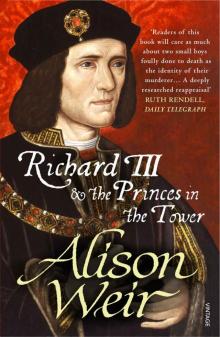 Richard III and the Princes in the Tower
Richard III and the Princes in the Tower Britain's Royal Families: The Complete Genealogy
Britain's Royal Families: The Complete Genealogy The Lady in the Tower: The Fall of Anne Boleyn
The Lady in the Tower: The Fall of Anne Boleyn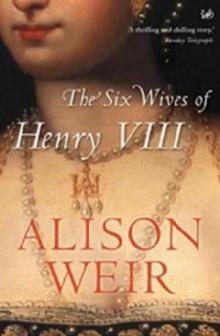 Six Wives of Henry VIII
Six Wives of Henry VIII Elizabeth of York: A Tudor Queen and Her World
Elizabeth of York: A Tudor Queen and Her World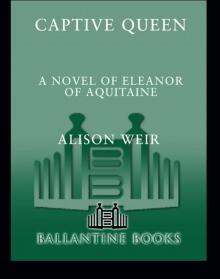 Captive Queen
Captive Queen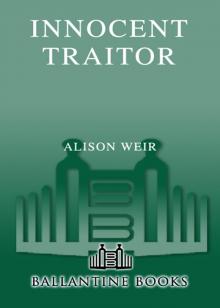 Innocent Traitor
Innocent Traitor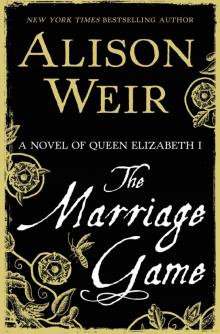 The Marriage Game
The Marriage Game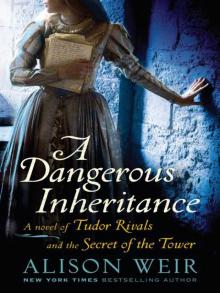 A Dangerous Inheritance
A Dangerous Inheritance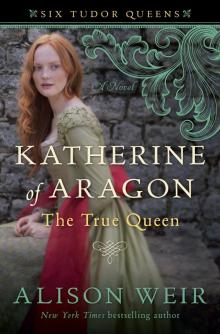 Katherine of Aragón: The True Queen
Katherine of Aragón: The True Queen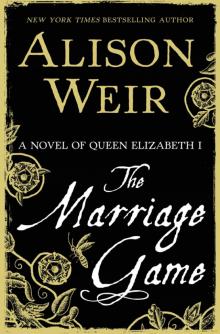 The Marriage Game: A Novel of Queen Elizabeth I
The Marriage Game: A Novel of Queen Elizabeth I Princes in the Tower
Princes in the Tower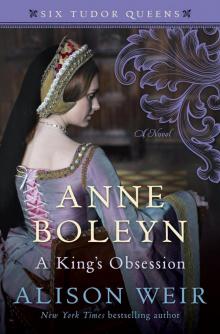 Anne Boleyn: A King's Obsession
Anne Boleyn: A King's Obsession Traitors of the Tower
Traitors of the Tower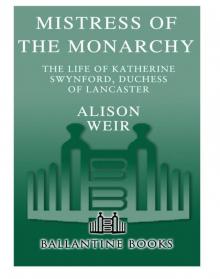 Mistress of the Monarchy: The Life of Katherine Swynford, Duchess of Lancaster
Mistress of the Monarchy: The Life of Katherine Swynford, Duchess of Lancaster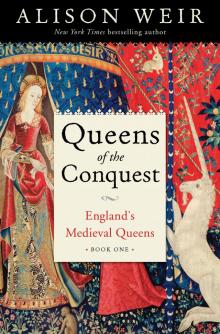 Queens of the Conquest: England’s Medieval Queens
Queens of the Conquest: England’s Medieval Queens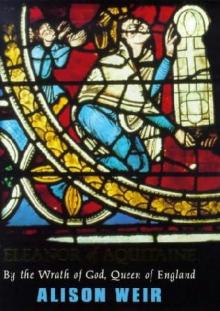 Eleanor of Aquitaine: A Life
Eleanor of Aquitaine: A Life Mary, Queen of Scots, and the Murder of Lord Darnley
Mary, Queen of Scots, and the Murder of Lord Darnley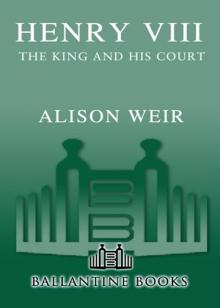 Henry VIII: The King and His Court
Henry VIII: The King and His Court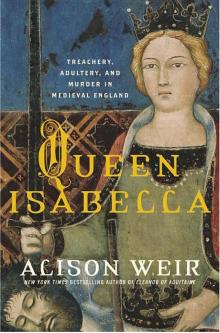 Queen Isabella: Treachery, Adultery, and Murder in Medieval England
Queen Isabella: Treachery, Adultery, and Murder in Medieval England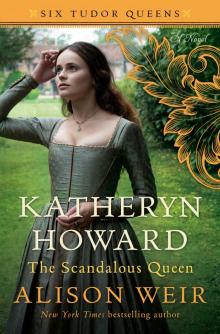 Katheryn Howard, the Scandalous Queen
Katheryn Howard, the Scandalous Queen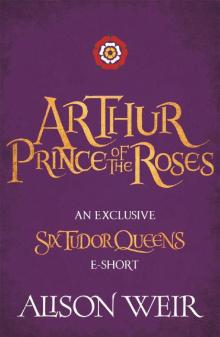 Arthur- Prince of the Roses
Arthur- Prince of the Roses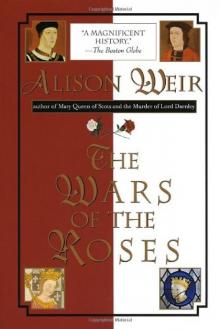 The Wars of the Roses
The Wars of the Roses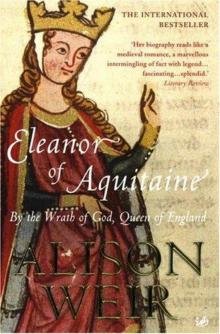 Eleanor of Aquitaine: By the Wrath of God, Queen of England
Eleanor of Aquitaine: By the Wrath of God, Queen of England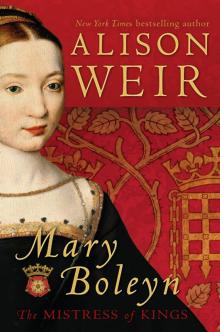 Mary Boleyn: The Great and Infamous Whore
Mary Boleyn: The Great and Infamous Whore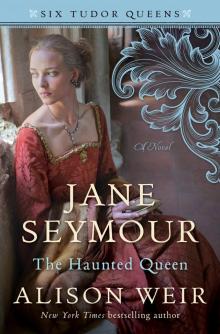 Jane Seymour: The Haunted Queen
Jane Seymour: The Haunted Queen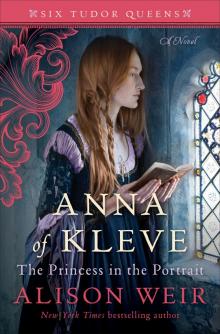 Anna of Kleve, the Princess in the Portrait
Anna of Kleve, the Princess in the Portrait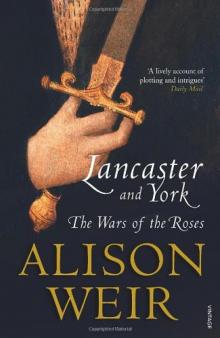 Lancaster and York: The Wars of the Roses
Lancaster and York: The Wars of the Roses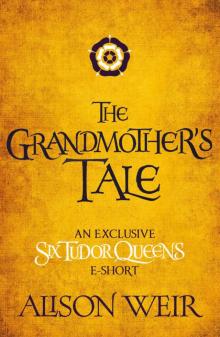 The Grandmother's Tale
The Grandmother's Tale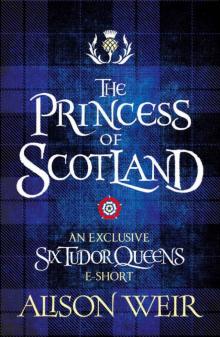 The Princess of Scotland (Six Tudor Queens #5.5)
The Princess of Scotland (Six Tudor Queens #5.5)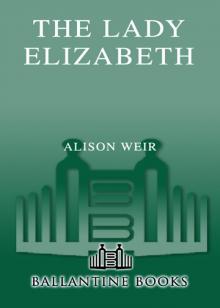 The Lady Elizabeth
The Lady Elizabeth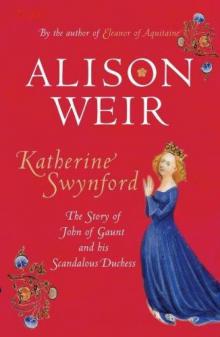 Katherine Swynford: The Story of John of Gaunt and His Scandalous Duchess
Katherine Swynford: The Story of John of Gaunt and His Scandalous Duchess The Curse of the Hungerfords
The Curse of the Hungerfords The Lost Tudor Princess: The Life of Lady Margaret Douglas
The Lost Tudor Princess: The Life of Lady Margaret Douglas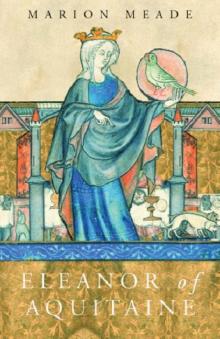 Eleanor of Aquitaine
Eleanor of Aquitaine Mistress of the Monarchy
Mistress of the Monarchy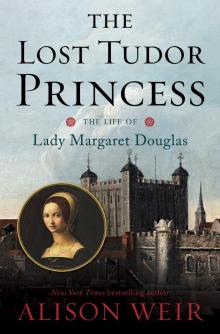 The Lost Tudor Princess
The Lost Tudor Princess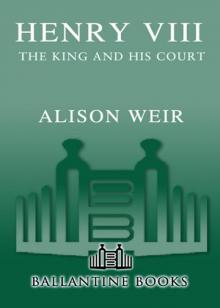 Henry VIII
Henry VIII Anne Boleyn, a King's Obsession
Anne Boleyn, a King's Obsession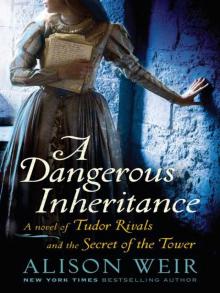 A Dangerous Inheritance: A Novel of Tudor Rivals and the Secret of the Tower
A Dangerous Inheritance: A Novel of Tudor Rivals and the Secret of the Tower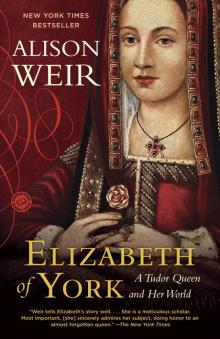 Elizabeth of York
Elizabeth of York Katherine of Aragon, the True Queen
Katherine of Aragon, the True Queen Katherine Swynford
Katherine Swynford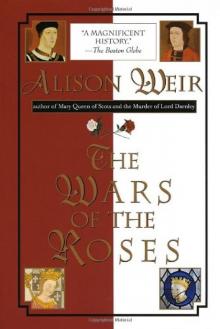 Wars of the Roses
Wars of the Roses Queens of the Conquest
Queens of the Conquest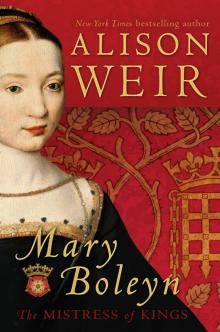 Mary Boleyn
Mary Boleyn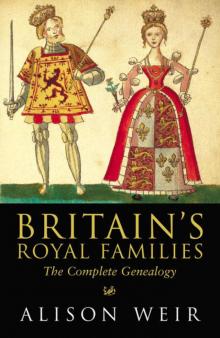 Britain's Royal Families
Britain's Royal Families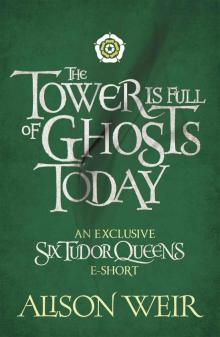 The Tower Is Full of Ghosts Today
The Tower Is Full of Ghosts Today Life of Elizabeth I
Life of Elizabeth I Anne Boleyn A King's Obssession
Anne Boleyn A King's Obssession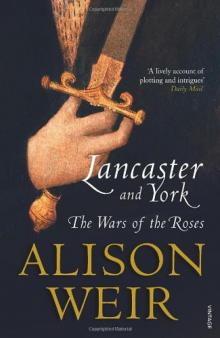 Lancaster and York
Lancaster and York Jane Seymour, the Haunted Queen
Jane Seymour, the Haunted Queen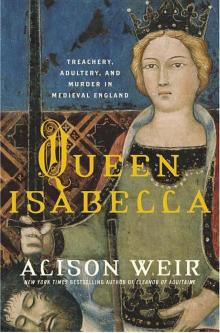 Queen Isabella
Queen Isabella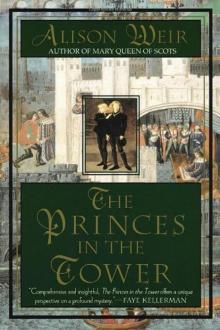 The princes in the tower
The princes in the tower